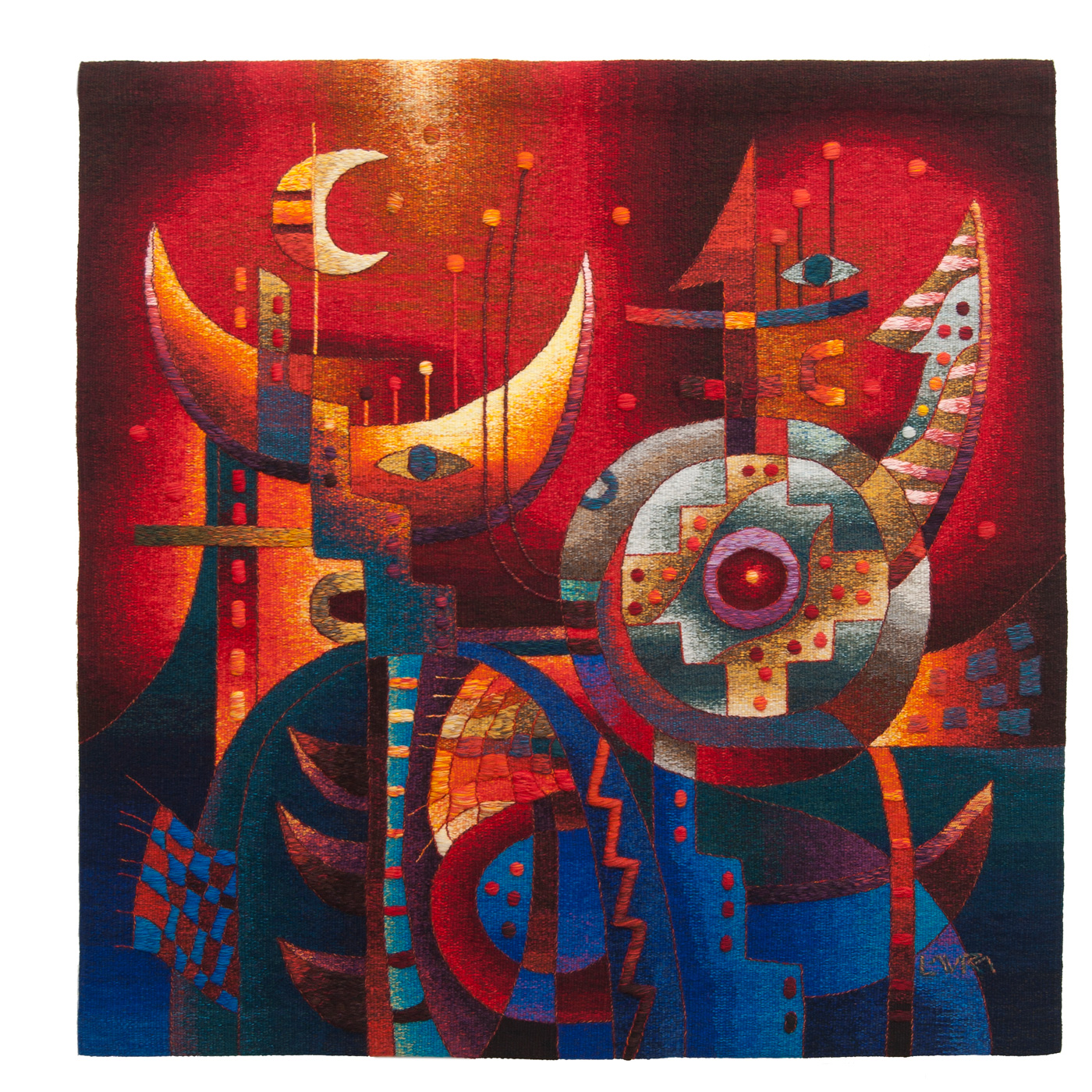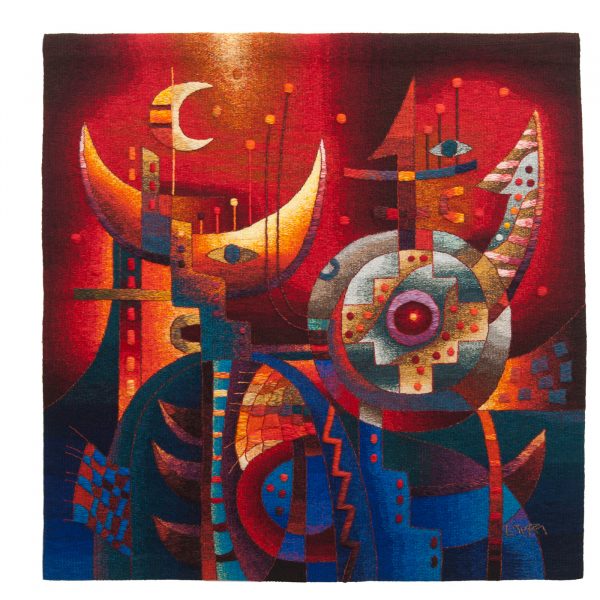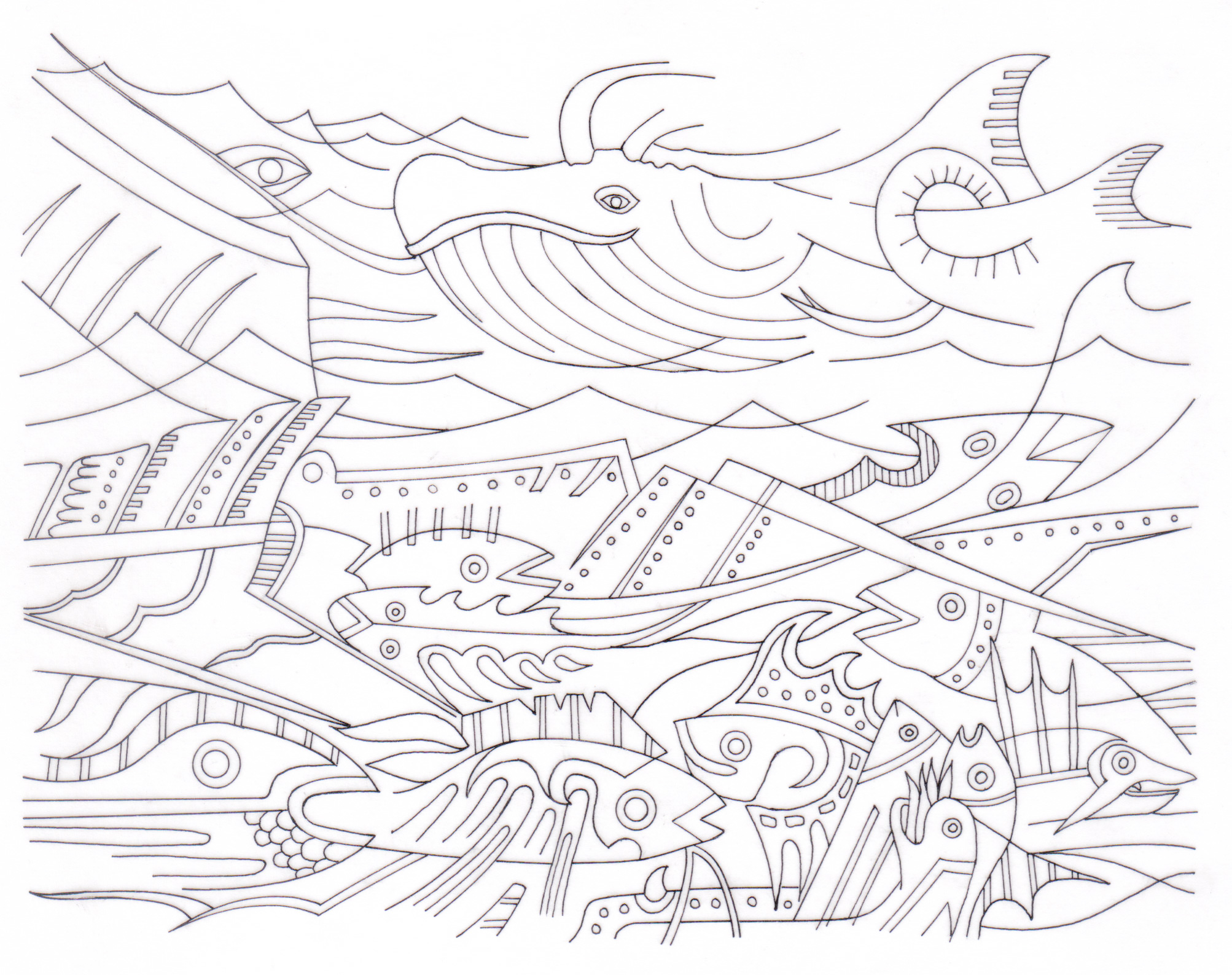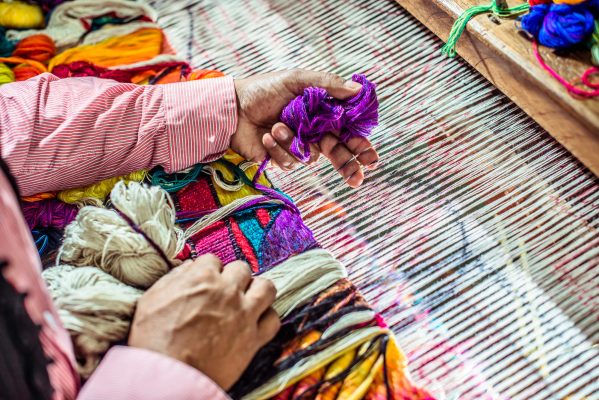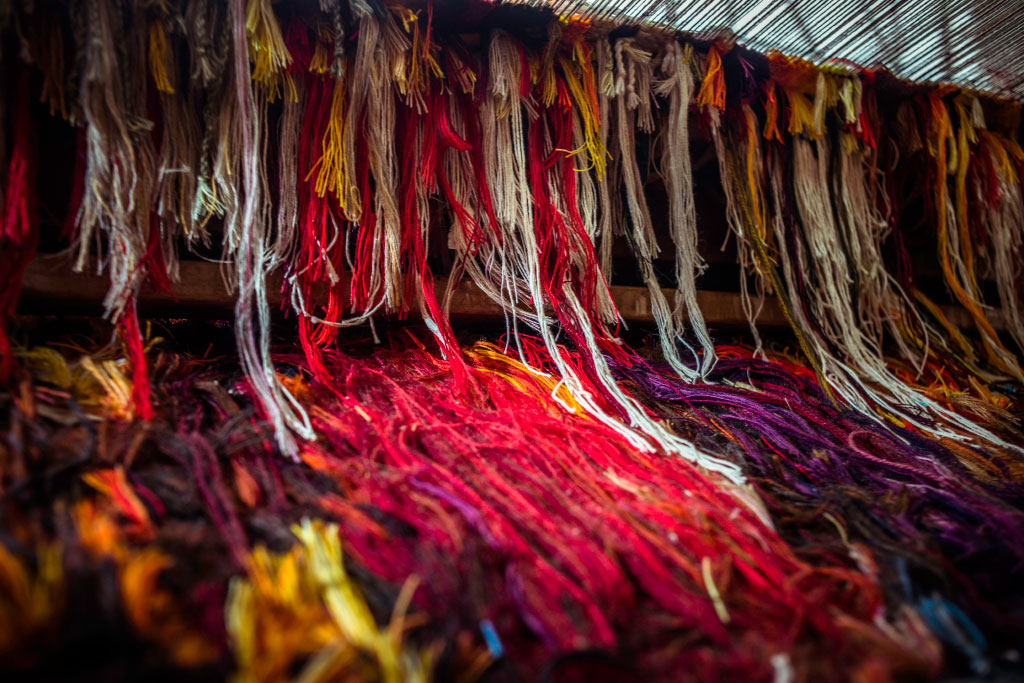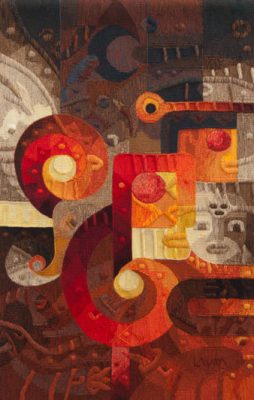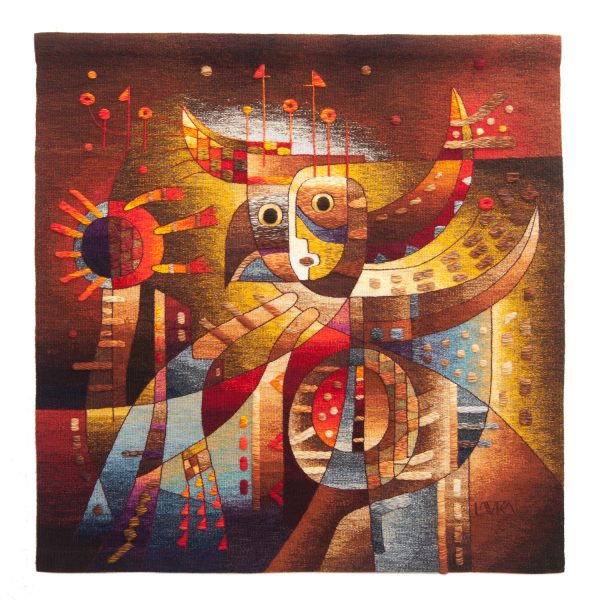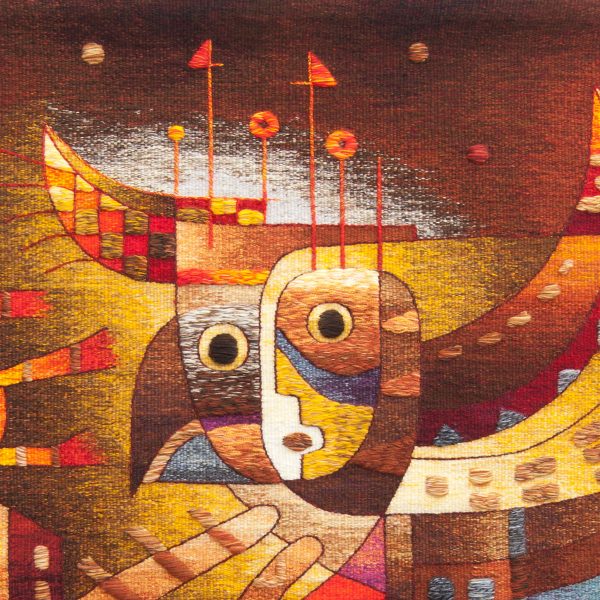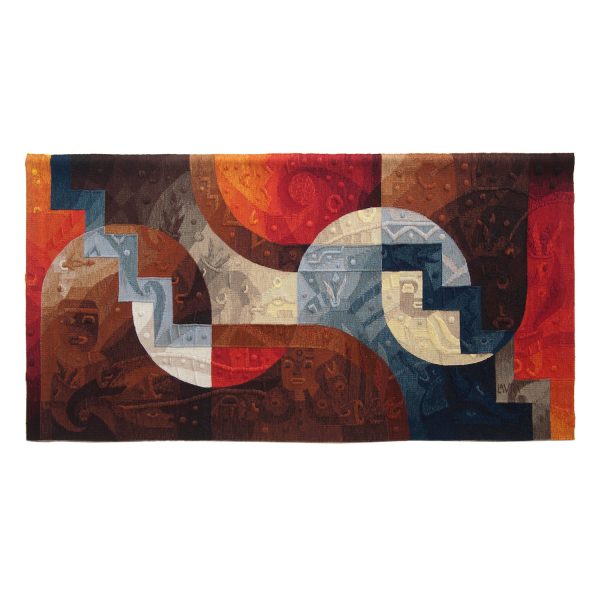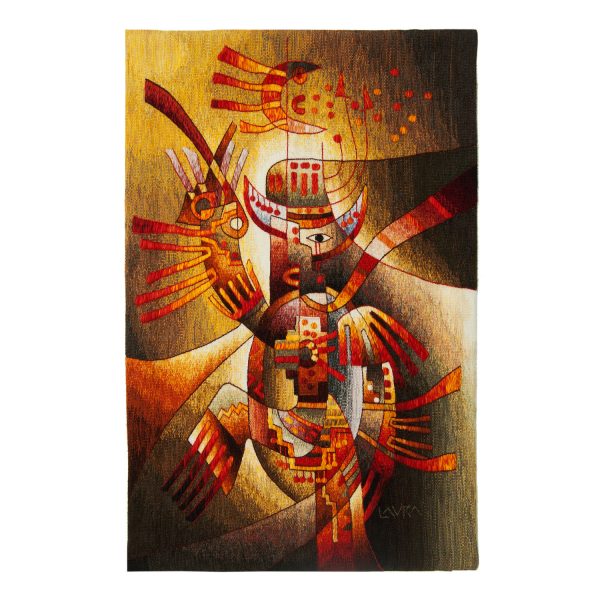Description
Hand Woven Tapestry, Peruvian alpaca, cotton and mixed fibers
Title: Cosmic Harmony I
Size: 47 x 47 inches (120 x 120 cm)
Weaving Time: 4 – 5 Weeks
Shipping: Worldwide Shipping Included
Click here to read what our clients are saying about us.
Purchasing Process:
Step 1: Click on the “Enquiry” button and complete the form
– We will email you to confirm the timeline and coordinate payment, which can happen now or before the tapestry ships.
Step 2: Weaving Process
– We will send photos of the progress of your tapestry when it is half-way completed and a final photograph to ensure your satisfaction before shipping.
Step 3: Shipping Process
– We will coordinate the shipping of your tapestry using DHL International Shipping and send you confirmation with the tracking number.
Should there be any questions please don’t hesitate to get in touch with us through the “Enquiry” button at the top of this page.
What our clients are saying about us

I admire the creativity of Maximo Laura and quality of his works. The piece that I bought decorates one of the most frequently used locations in my house. Everybody loves it.

A treasured piece of art that will only go up in value. Our tapestry is the first thing people comment on when they enter our house. It really is spectacular in color and composition.

We now have two Maximo Laura tapestries hanging in our home, and the artwork has changed the look and feel of our home in a very positive way. Guests in our home continually comment on the works.

When we purchased a Laura tapestry, we brought home the most authentic Peruvian gift we could give our family and our home here in Alaska. It delights us everyday.

The designs, colors and relief in Maximo Laura's tapestries have taken the art form to new heights. They will be enjoyed for centuries to come.

I have now purchased two tapestries. The process was simple and without problems. The tapestries have added a warmth and distinction to our home that will be timeless. Our first tapestry has been in our home for more than 2 years, and there is still hardly a day goes by that I do not sit at the end of a long day and simply enjoy the serenity and beauty of the tapestries hanging on the wall. Every day they remind me of how fortunate my family and I are to be able to have such treasures in our home. These are true heirlooms that will be in the family for generations to come.

I had not seen such beautiful use of colour, shape and craftsmanship before I came across Maximo Laura's tapestry work. I smile every time I glance across my room and see it. I still can't believe it's mine.

The first time I saw a Laura tapestry in Cusco, I was astounded at the beauty of the design and colors. I had a difficult time choosing which to purchase, I knew I had to have one! The second time I came across them was in the Galapagos ...so I got another. Then when I discovered the website, I could not resist buying a third. The staff was very helpful and they allowed me to alter some of the color. The artwork was exactly what I wanted. I am I love with the work of Maximo Laura!

Exceptionally beautiful and meaningful artwork.

Everyone who visits my home just sits and marvels at my tapestry with its intense colours varying weaving techniques. I love it. When visiting Peru my friend bought a tapestry from the gallery and had it shipped with no problems and once he had it mounted in his new house I knew I had to have one for myself. I found Dance of the Fire Gods was the perfect size and colours for my home. At dawn as the sun rises the flames in the tapestry come alive - it's my favourite time of day.

Everyone has been very nice and accommodating. We love our tapestries. They are an important part of our home, that add color and thoughtfulness. Thanks.

There are so many layers of experiencing Maximo's tapestries. At a distance, they are bold and imaginative and always manage to stir a sense of connection to something that is both grounding and cosmic. Overtime, these tapestries have delighted me with endless discoveries of details in their form, texture, and color that are sometimes humorous, sometimes perspective-changing, and always thought provoking. Working with Maximo Laura's studio in making the purchase of our first tapestry was just a fantastic experience. We had the opportunity to visit Maximo's studio in Lima where we were treated with the utmost hospitality and left feeling connected not just as fans and customers, but as kindred friends. I cannot recommend working with and being inspired by Senor Laura's art enough.

The experience of purchase with Maximo Laura is unique in that your order is made to request. My order status was regularly updated and any questions I had were promptly answered. My family absolutely love my tapestry and the designs are great talking points. The hardest thing about the process is choosing which design to purchase!

I am from Canada and saw Maximo's work in a gallery on a trip to the Galapagos. I was a bit nervous about ordering a tapestry online but they get me up to date on the status of the work. When it was finished they sent me a picture of the finished product and let me know when it would be shipped. It was completed and arrived in the time frames they indicated. I purchased Towards Home and most importantly it is as beautiful as I hoped it would be. I had a great experience with the website.

The tapestry is absolutely beautiful. Everyone who sees it, loves it. I had no problem at all with the purchase or the shipping. We hope to buy another one in the future.

It was as easy to shop and purchase as it is to buy on Amazon. The dealer kept me abreast of progress and total pricing. Each time I purchased tapestries, I was not disappointed. Color may even be more vibrant than in catalog which was such a delightful relief. Can't wait for my next art piece to display in my home. I consistently get glowing and admirable comments on them.

My experience from start to finish was flawless: they responded when they said they would, didn't ask for payment until the tapestry was complete, and delivered exactly what I expected when they promised it would be there.

Beautiful tapestry, shipped as promised to Canada, and has hung in my house for years!

The tapestry is more beautiful that it seemed to be on the photo. I received quick answers each time I had a question. A nice service and incredible art.

I have nothing but positive things to say about this artist. Maximo Laura's work is breathtaking and timeless. I was extremely impressed with the care and assistance I was provided by his staff while ordering his work and will definitely purchase again.

I have purchased two works. The pictures from the website are very accurate but the difference of having one in your home where you can stand and look at it is really something. If you are thinking of buying one you need have no concerns. These are professional people who are dedicated to the finest art and have outstanding customer service. You will not be disappointed.

I am very pleased with my experience purchasing a tapestry from the Maximo Laura website. The service was courteous and prompt and the tapestry arrived on time, along with a beautiful coffee table book about Maximo Laura and his work. The tapestry is a wonderful memento of our trip to Peru and a beautiful addition to our art collection.

I have 3 tapestries. Working with the folks at Laura has been easy. Highly recommend if you want a tapestry.

We saw our first Maximo Laura piece at a gallery in Mexico while on vacation. My husband and I later checked your website and were thrilled to find we could order the piece we liked the most. We liked the piece we saw in Mexico but love the piece we actually ordered. It looks stunning hanging on the wall in our TV room. We were totally pleased with the process your offered...... service ordering, updates and shipping time.

The buying process was smooth with no unwelcome surprises. The tapestry is exceptional beautiful. I was and still am very thrilled to have the work of Maximo Laura in my home. It's been a couple years since getting the tapestries and they continue to give me great joy.

Dealing with your organization was an absolute pleasure in every way possible. From order to queries to delivery and the tapestry is magnificent.

The two tapestries that we purchased online from Maximo Laura were exactly as we had viewed them on the website. They of course are stunning and we receive many comments saying how unique and beautiful they are. Initially, I was worried about ordering something from Peru because of possible shipping and monetary exchange issues. Giancarlo Soldi, the person I dealt with could not have been more helpful and true to his word. Ordering and turned out to be seamless, the transaction was made easily via credit card and the delivery was as promised.

After seeing this beautiful tapestry by Maximo Laura I was convinced I was not leaving Peru without making the purchase. Giancarlo Soldi, the Maximo Laura Studio Representative, filled us in on the story behind this unique tapestry along with many, many details behind Mr. Laura's inspiration for the piece. Its overwhelming beauty was enough to make the commitment but the added story, iconography, and the conveyed personal inspiration of the artist is one I will be able to share with friends and family. We are very proud and happy to share this breathtaking tapestry with guests to our home in California. Thank you, Mr Laura, and Giancarlo for sharing your amazing art with us!

